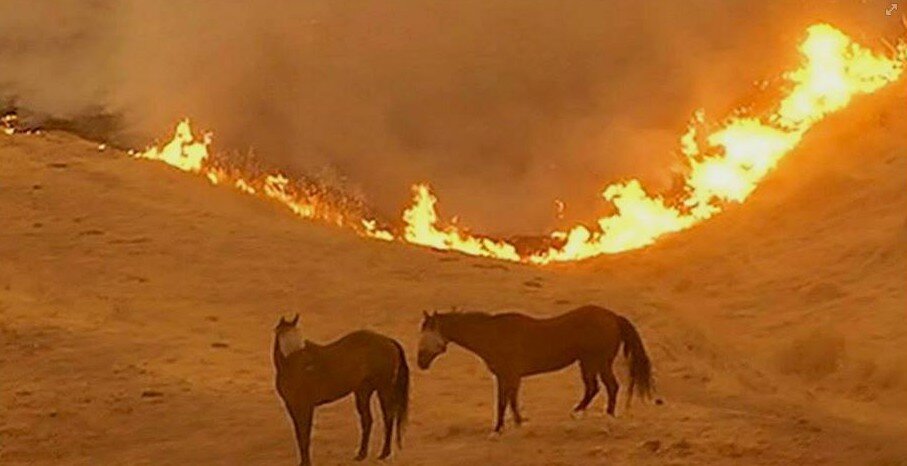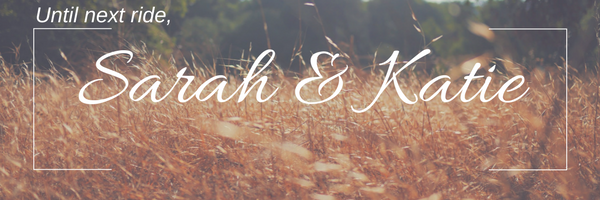EMERGENCY! Be Prepared In Fire
Preparation is key.
With the current events across Eastern Australia, it is no wonder that many of us are on edge.
The fires that are raging are devastating wildlife, property, pet and animal lives. And when the one’s we love are under threat, especially with something so hell-on-earth like bushfire, it puts us into high stress mode - which unfortunately, is not always condusive to straight thinking.
Fortunately, horses are quite clever at getting out of the way of fire, as long as we give them the right chance.
It’s on that note, we have compiled a list to help you prepare in case a fire emergency strikes.
1. Know their safe place
That way, when your property is placed at risk, or if there is a chance it may occur, you can move your horses to a designated area.
Horses can usually escape or avoid fire if they are given enough space, and if we make that space an area less likely to burn, that makes it even easier! So select a large “Jenny Craig” paddock (eaten out of vegetation, or more dirt than grass). Alternatively, a number small eaten out paddocks interlinked with opened gates, or a large sand arena devoid of close vegetation or buildings, may also be suitable.
Even better if that area has a dam that the horses can stand in to escape the flames and heat.
DO NOT put them in small, inescapable areas such as pens or stables - they will more likely panic, thrash and become injured, and have little ability to escape any upcoming flames.
2. Remove all tack
While halters may make your horse easier to catch if you need to relocate them, if the fire whips across quickly, any tack including rugs, halters or lead ropes can catch alight and either burn or melt - not keeping your horse safe at all.
3. Have an exit strategy
It goes without saying but still must be said - YOU MUST HAVE AN EXIT STRATEGY, AND YOU MUST KNOW WHEN TO IMPLIMENT IT!
Keep an eye on your local government or fire management sites, radio or television to understand the threat. The best advice of actions to take is available there.
Choose an alternative, out of the way location to move your horse - a friends, the local (or not so local) pony club or showgrounds, sale yards, race tracks, or even a riding school or animal shelter - just be sure they can recieve you (and you may be expected to stay with your horse at some of these locations, so know in advance in case you need to have multiple trips for multiple horses).
Work with friends or neighbours to maximise the movement of animals.
It doesn’t matter if you act on the exit strategy early. In fact, it is far better you do, than risk the lives of your horses, yourselves, and the brave men and women who are willing to sacrifice their lives to save ours.
4. Mark your horse with your contact information
Having clear contact numbers on your horse can help you find them again should any fencing burn down and they escape.
Paint your phone number on their flanks - if you do it in large numbers, people who find but cannot catch your horse can easily read it and call you out. If you paint their hooves, remember that soot will settle there and it may be harder to read at a distance.
Shave your contact number into their coat - yes, it may take a while to grow back, but far better to grow back in your paddock and look funny for a while than to never know what happened to your horse.
Braid an id tag into their mane (not tail) - but remember, someone needs to get close enough to your freaked out horse to read it, so something much less subtle, such as painted flanks, is easier.
5. Cut your horses tail
Cut it short, or braid it up, to reduce the chance of it catching a stray ember and literally setting fire to your horse’s arse…
6. Avoid letting your horse loose on the roads if you can
A horse that is running on the road is by far more likely to come into danger from a panicked driver or a speeding emergency service vehicle than it is from the fire - and is more likely to put human lives at risk also.
7. Have your first aid kit handy
When it is safe to check on your horses, make sure your first aid kit is fully supplied and ready to deal with any minor or major injuries that may have occurred. Have your vet’s number handy but understand they may be in just as much trouble as you, so have as many back up contacts as possible.
Stay smart, stay safe, and we hope to see everyone alive on the other side of this disaster.
xo
Sarah & Katie
Do you have any tips we missed, or experienced a fire disaster? Put them in the comments below!
Looking for more specific content?
Have a question you are seeking answers to? Send us a message and we will create a blog!


